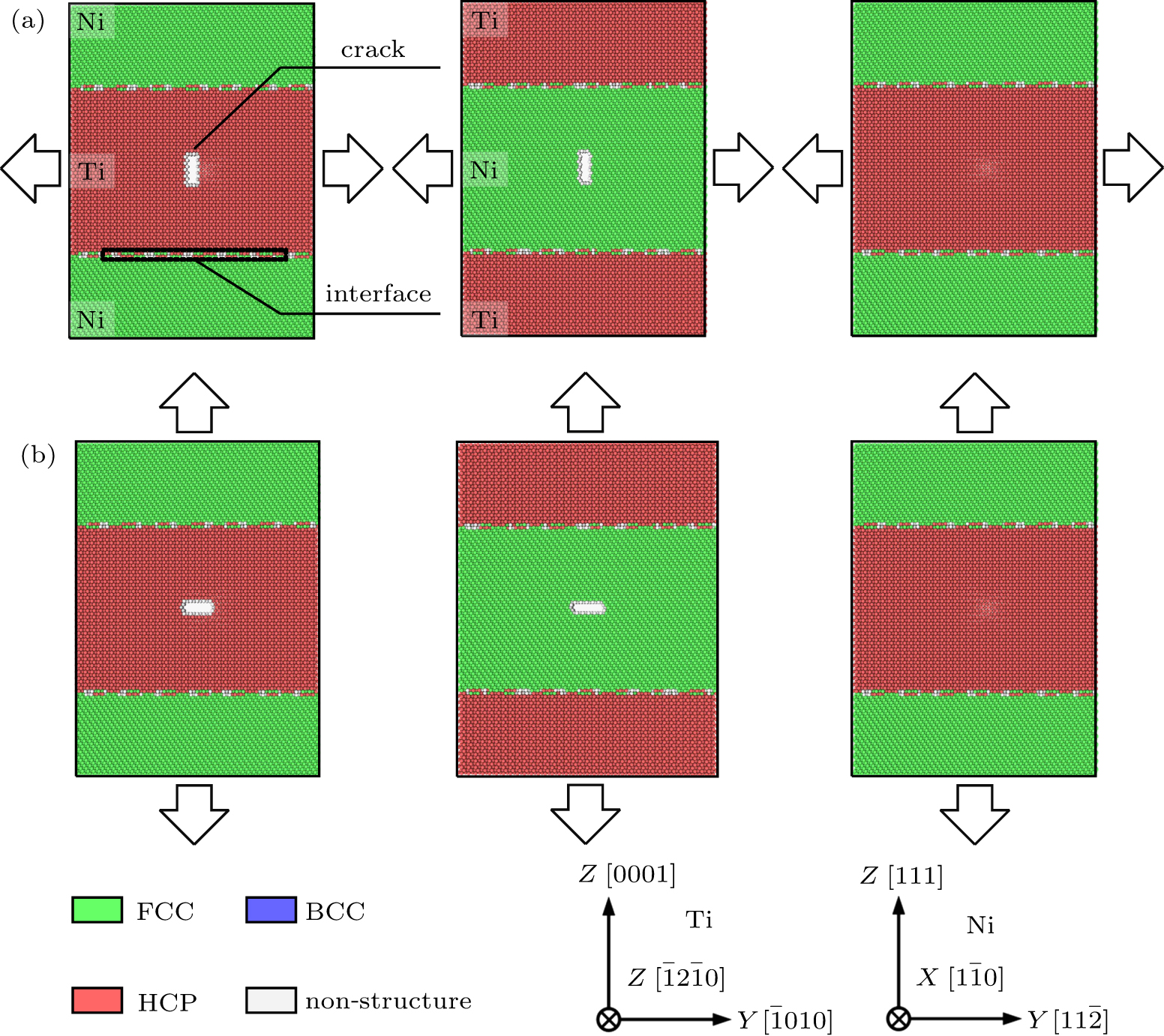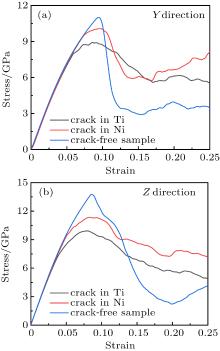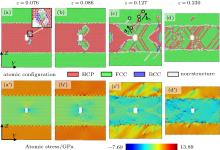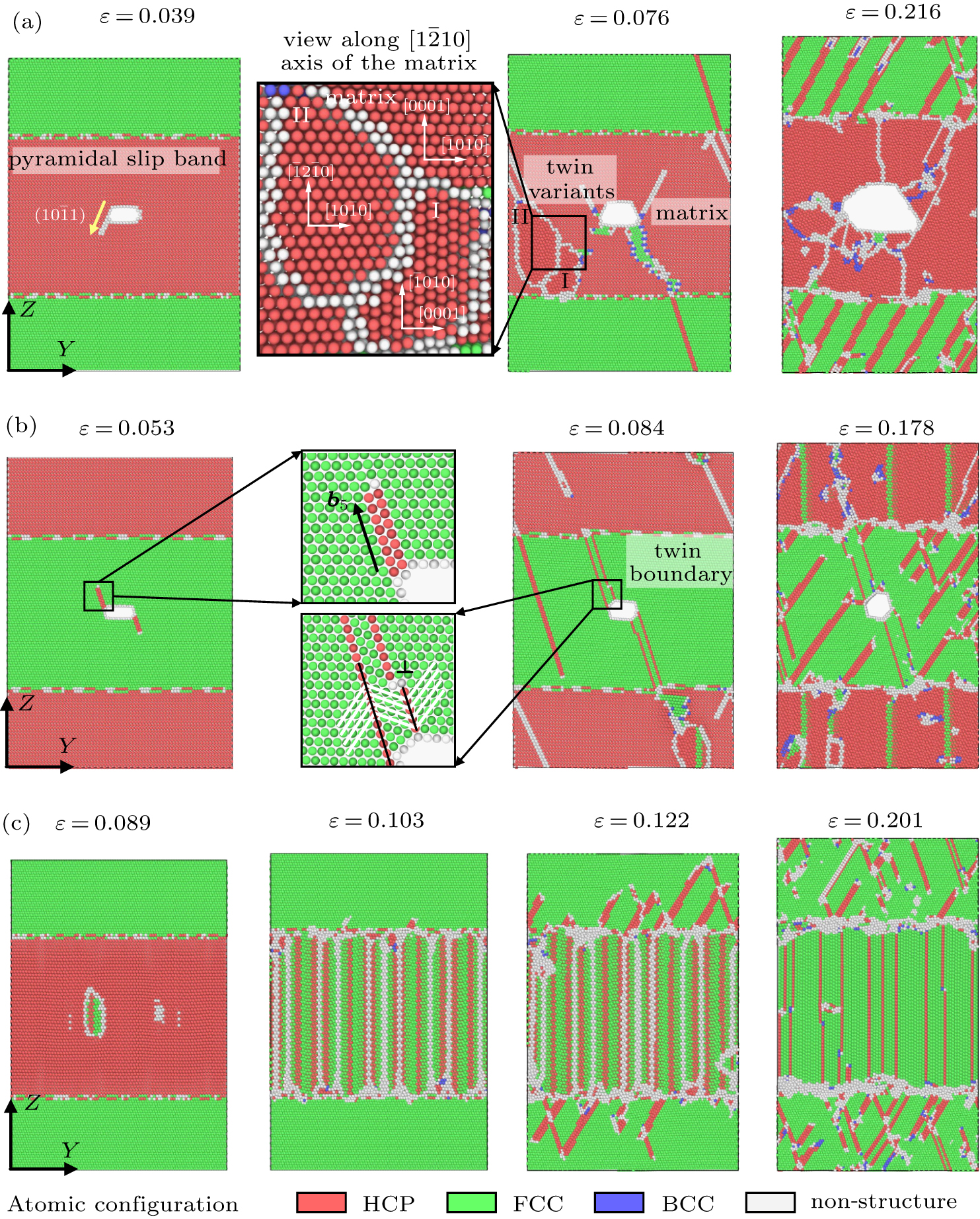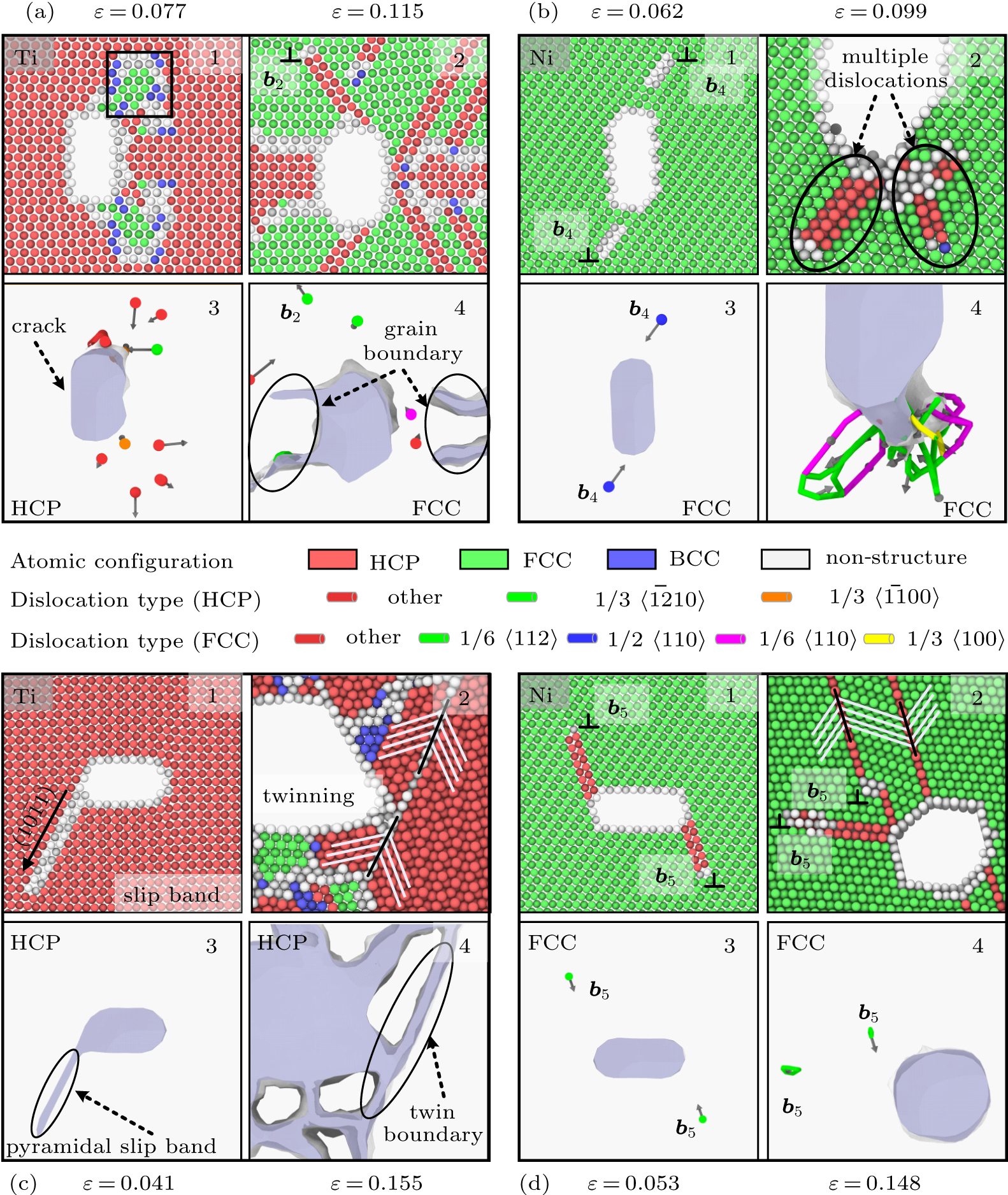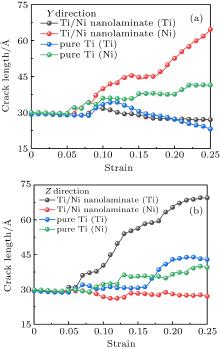中国物理B ›› 2020, Vol. 29 ›› Issue (11): 116201-.doi: 10.1088/1674-1056/aba2e5
Meng-Jia Su(宿梦嘉)1,2, Qiong Deng(邓琼)1,2,†( ), Min-Rong An(安敏荣)3,‡(
), Min-Rong An(安敏荣)3,‡( ), Lan-Ting Liu(刘兰亭)1,2
), Lan-Ting Liu(刘兰亭)1,2
Plastic deformation mechanism transition of Ti/Ni nanolaminate with pre-existing crack: Molecular dynamics study
Meng-Jia Su(宿梦嘉)1, 2, Qiong Deng(邓琼)1, 2, †, Min-Rong An(安敏荣)3,, ‡, and Lan-Ting Liu(刘兰亭)1, 2
- 1 Fundamental Science on Aircraft Structural Mechanics and Strength Laboratory, Northwestern Polytechnical University, Xi’an 710072, China
2 School of Aeronautics, Northwestern Polytechnical University, Xi’an 710072, China
3 College of Materials Science and Engineering, Xi’an Shiyou University, Xi’an 710065, China

